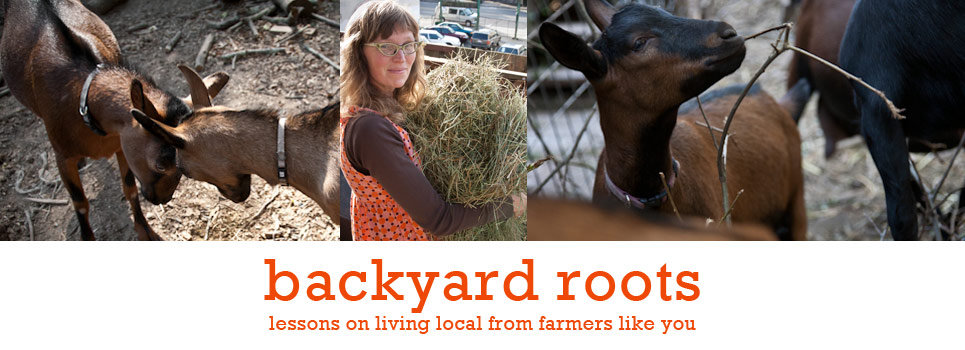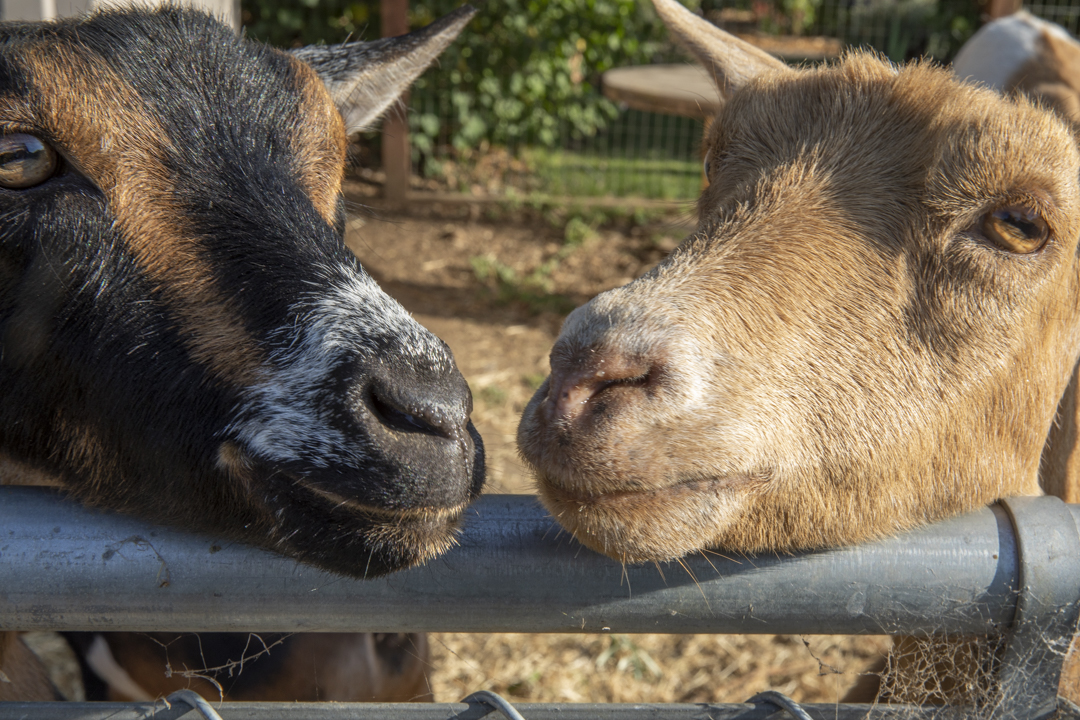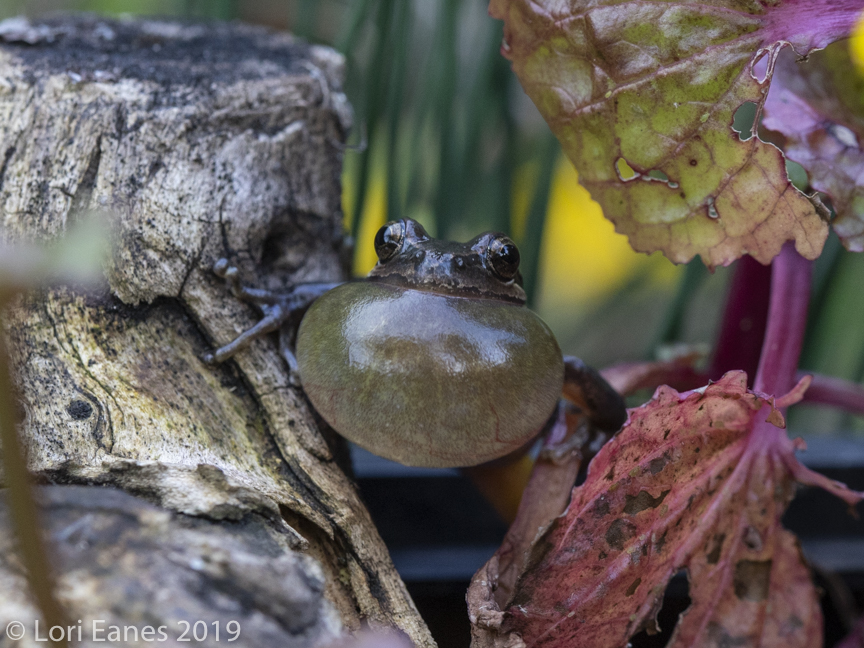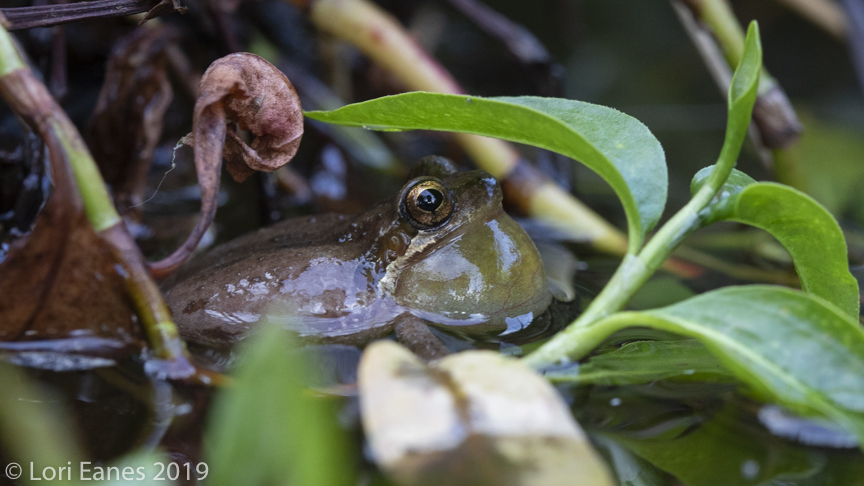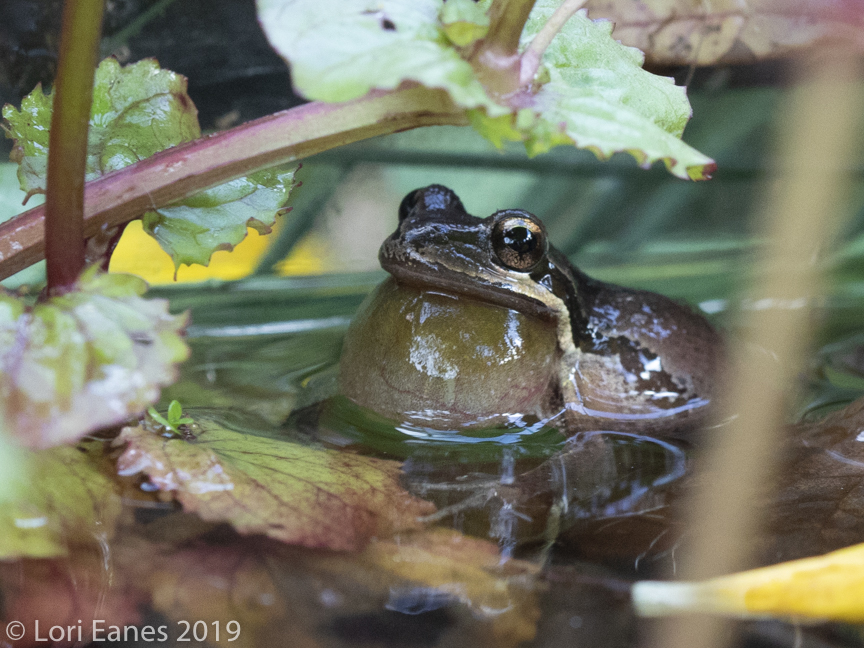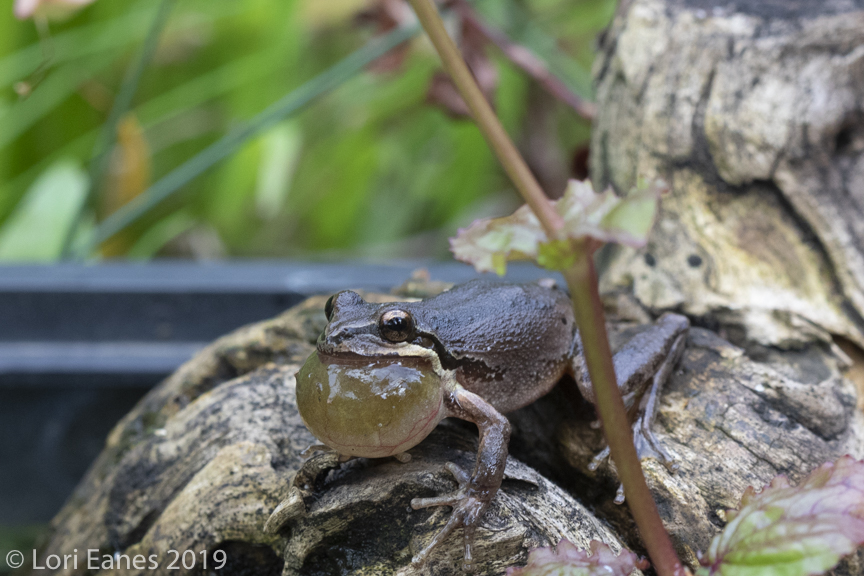Eight years ago I photographed Rachel Hoff and Tom Ferguson’s farm for my urban farm book, Backyard Roots. They were the Vallejo couple who went a year without buying groceries, surviving on the produce, meat, milk and eggs from their backyard farm, supplemented only by farmers markets. Rachel recently posted some gorgeous photos of her redesigned backyard and I was curious to see how it has evolved so I visited last weekend.
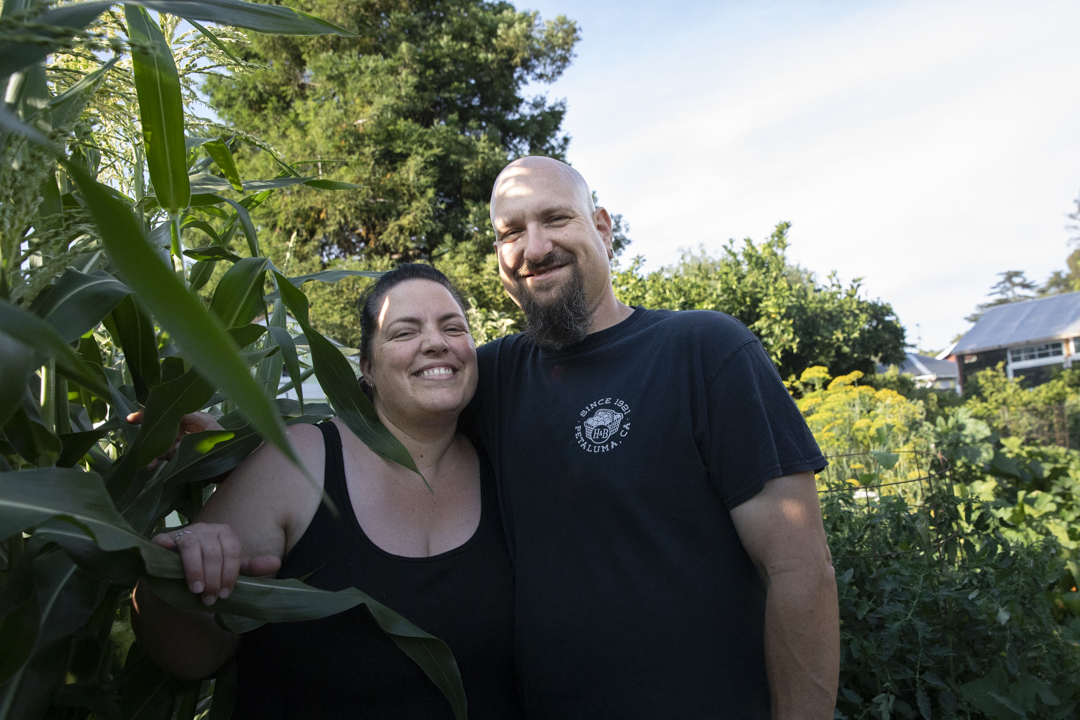 Their backyard is still about a quarter of an acre but somehow it feels bigger. Rachel, a landscape designer by trade has changed the backyard from straight paths with large square beds to meandering trails paved with mulch. The result is lush and interesting beds that mixes patches of flowers with the vegetables. It’s Rachel’s design of adding pops of color, contrasting texture and height. The flowers are an experiment, Rachel says, to bring in beneficial pollinators and also to confuse the pests. So far, it’s working well. She says the pesticide-free garden has less pests this year than ever. The garden also includes about 25 fruit trees including unusual varieties like mulberry, pineapple guava, quince and many heirlooms.
Their backyard is still about a quarter of an acre but somehow it feels bigger. Rachel, a landscape designer by trade has changed the backyard from straight paths with large square beds to meandering trails paved with mulch. The result is lush and interesting beds that mixes patches of flowers with the vegetables. It’s Rachel’s design of adding pops of color, contrasting texture and height. The flowers are an experiment, Rachel says, to bring in beneficial pollinators and also to confuse the pests. So far, it’s working well. She says the pesticide-free garden has less pests this year than ever. The garden also includes about 25 fruit trees including unusual varieties like mulberry, pineapple guava, quince and many heirlooms.
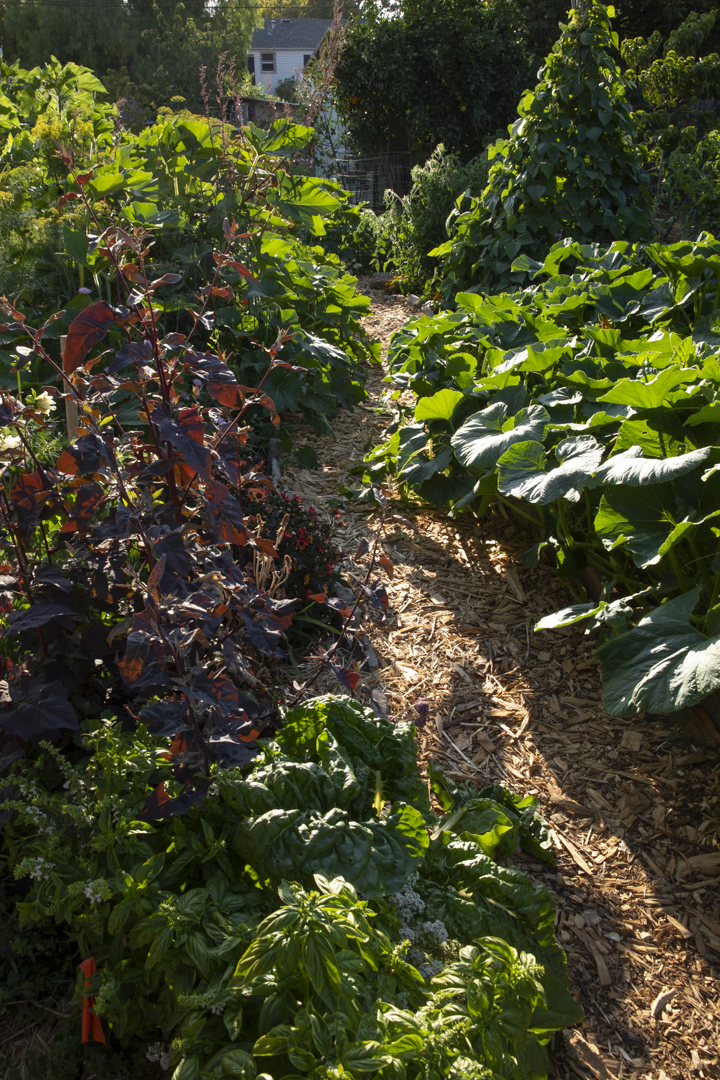
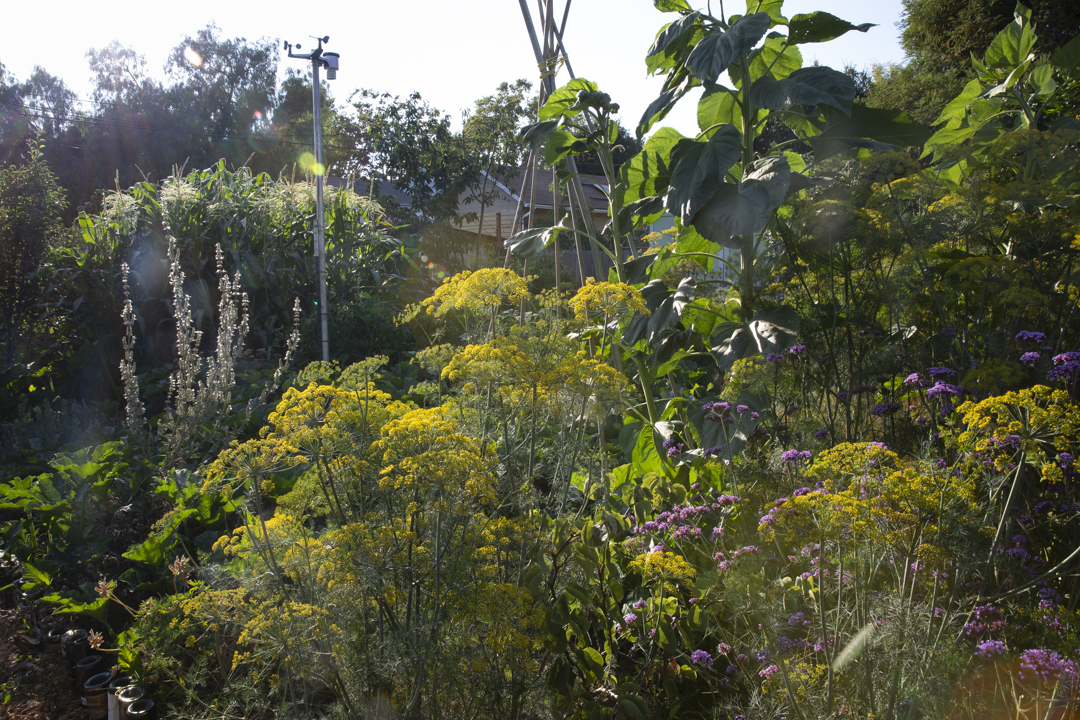
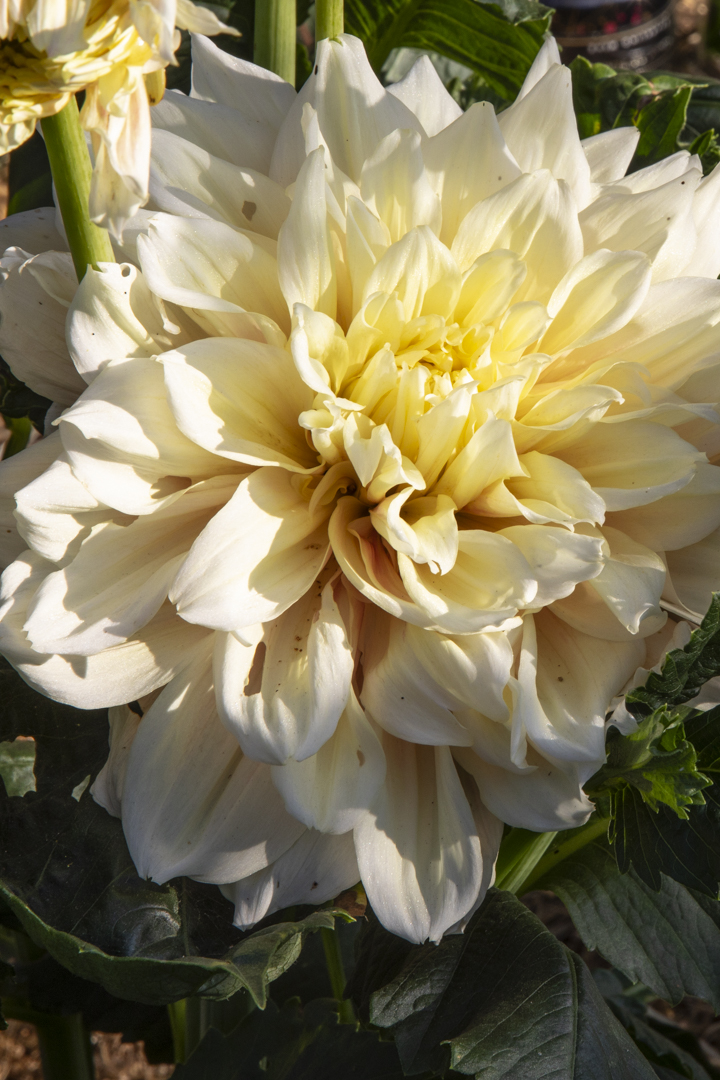 The heart of Rachel and Tom’s farm is still the goats, now kept on the north side of the farm. The chickens and turkeys kept on the opposite side. They gave up the rabbits, a meat that Rachel never liked much. The raise only Nigerian dwarf goats now and besides adding loads of personality, they also provide all the fertilizer and most of the milk. This year, of the 14 kids birthed they have kept two. They sold the other surviving kids easily, the breed is very popular. Other new additions to the farm include a new barn that Tom insisted was just a Tuff Shed, though at 16’x16′ it was the biggest one I’ve ever seen. The shed includes added-on double-paned windows and plumbing and houses their new electric 4 gallon milk machine, another time-saving feature.
The heart of Rachel and Tom’s farm is still the goats, now kept on the north side of the farm. The chickens and turkeys kept on the opposite side. They gave up the rabbits, a meat that Rachel never liked much. The raise only Nigerian dwarf goats now and besides adding loads of personality, they also provide all the fertilizer and most of the milk. This year, of the 14 kids birthed they have kept two. They sold the other surviving kids easily, the breed is very popular. Other new additions to the farm include a new barn that Tom insisted was just a Tuff Shed, though at 16’x16′ it was the biggest one I’ve ever seen. The shed includes added-on double-paned windows and plumbing and houses their new electric 4 gallon milk machine, another time-saving feature.
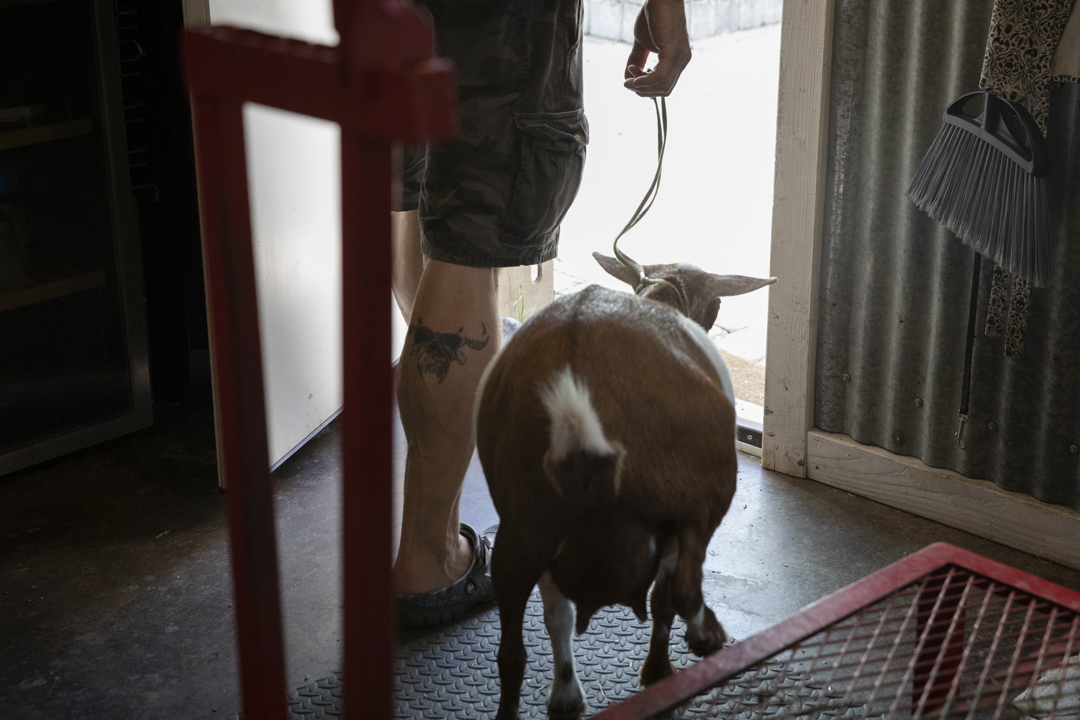
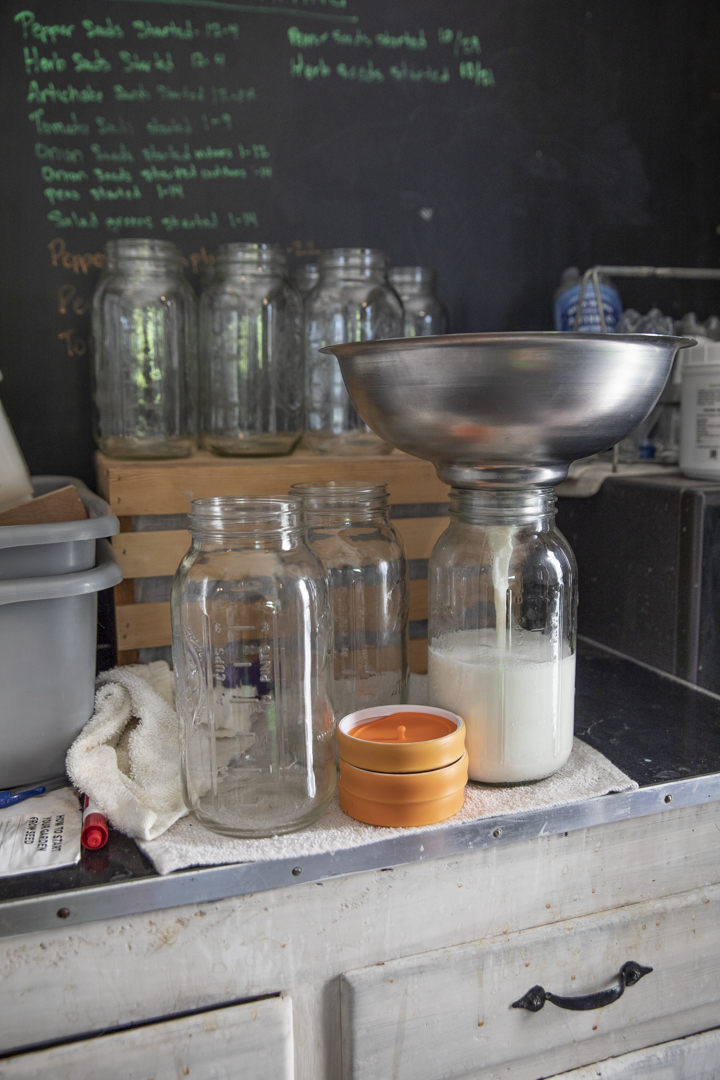 On the other side of the yard next to the chickens, Tom put in a new 16’x16’ greenhouse made completely out of recycled materials. He used double-paned glass on the new greenhouse too, a feature that keeps it much warmer than the old one.
On the other side of the yard next to the chickens, Tom put in a new 16’x16’ greenhouse made completely out of recycled materials. He used double-paned glass on the new greenhouse too, a feature that keeps it much warmer than the old one.
When I first visited Dog Island farm back in 2011, the recession was in full swing. Rachel and Tom were working less and they had more time for the farm and animals. Now, they are not only working full-time but are also starting a new business, their Grow a Pear Nursery. So far it’s a pop-up in the spring selling vegetables and native plants, but they are looking for a permanent home. They specialize in unique vegetable varieties that are productive, tasty and unusual, all grown especially for the local climate.
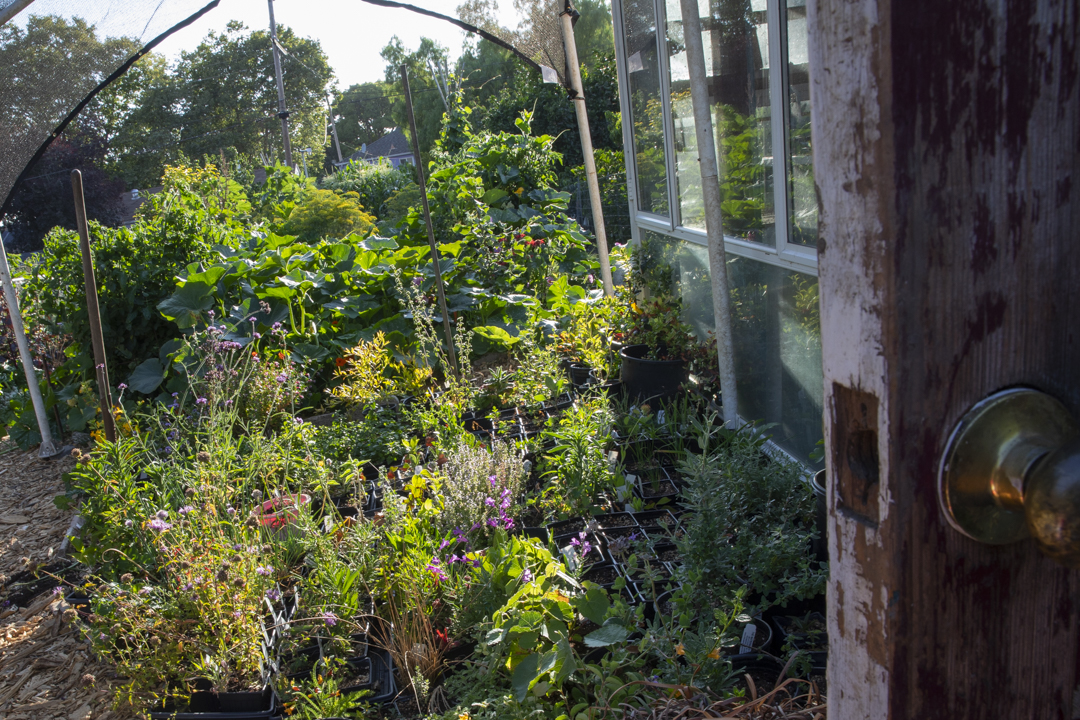
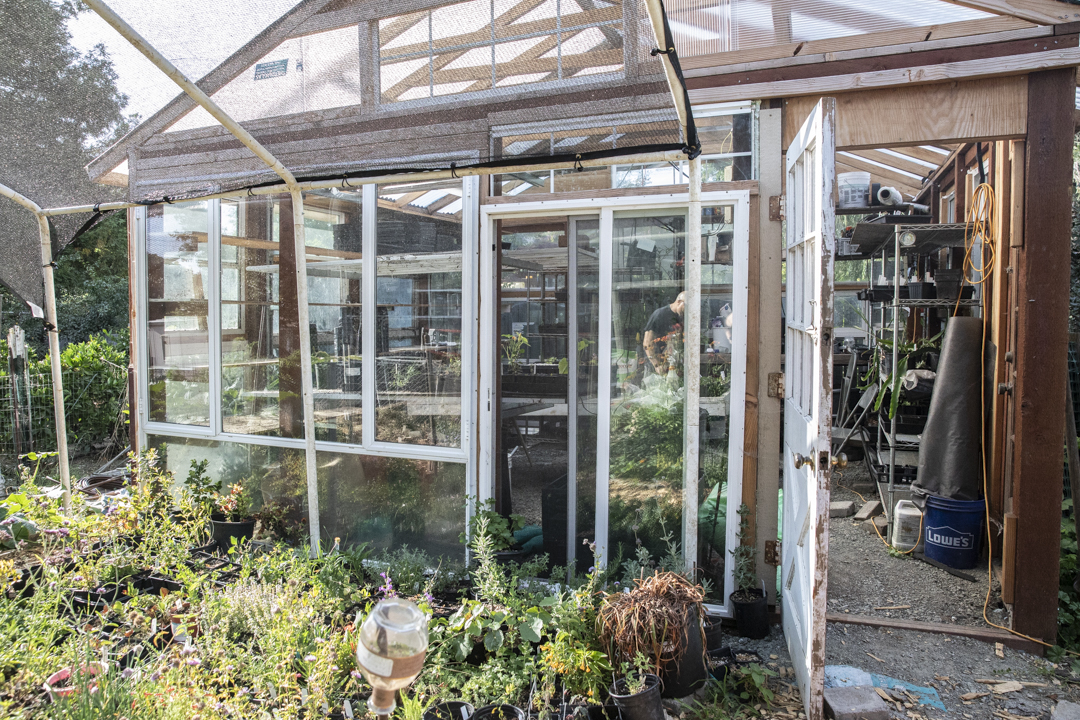 On their own farm Rachel and Tom test many vegetable varieties, concentrating on planting what they love most. This year it’s 26 varieties of tomatoes and lots of squash and corn. Some favorites are the Wapsipinicon Peach tomato for sweetness and Green Zebra for zingy-ness. For the other veggies they’ve learned to save time by picking plants that require only one harvest like onions, garlic, potatoes and winter squash. They also plant vegetables that can be dried like beans and corn, another easy storage option. They do much less canning these days but Tom still makes time for tomato sauce.
On their own farm Rachel and Tom test many vegetable varieties, concentrating on planting what they love most. This year it’s 26 varieties of tomatoes and lots of squash and corn. Some favorites are the Wapsipinicon Peach tomato for sweetness and Green Zebra for zingy-ness. For the other veggies they’ve learned to save time by picking plants that require only one harvest like onions, garlic, potatoes and winter squash. They also plant vegetables that can be dried like beans and corn, another easy storage option. They do much less canning these days but Tom still makes time for tomato sauce.
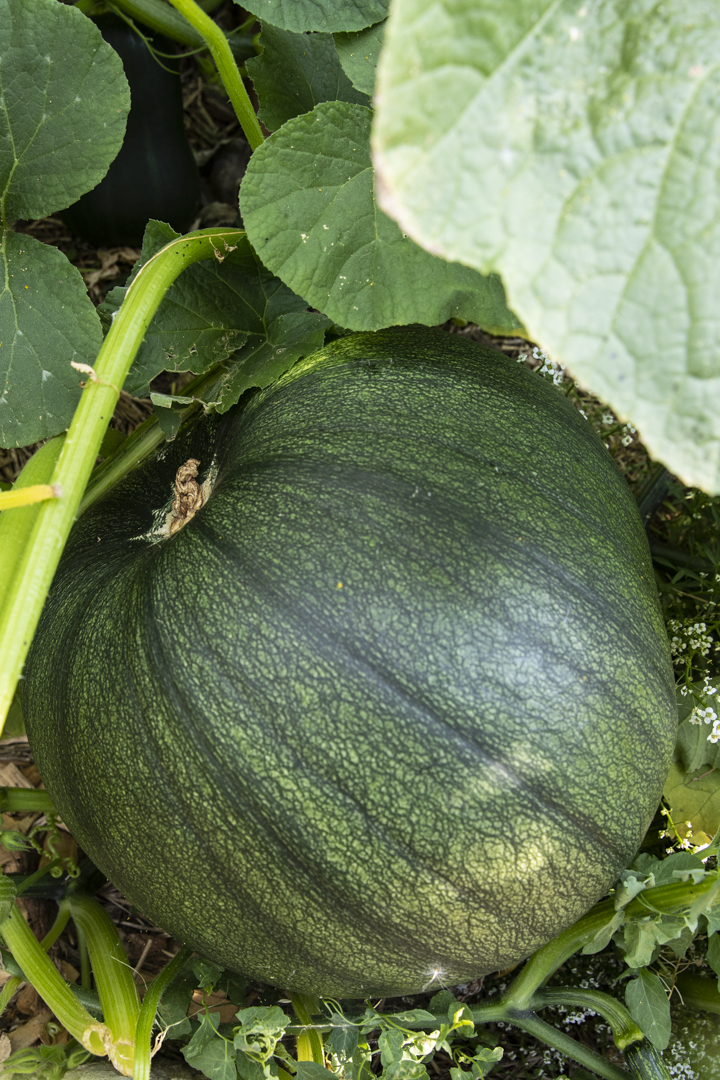
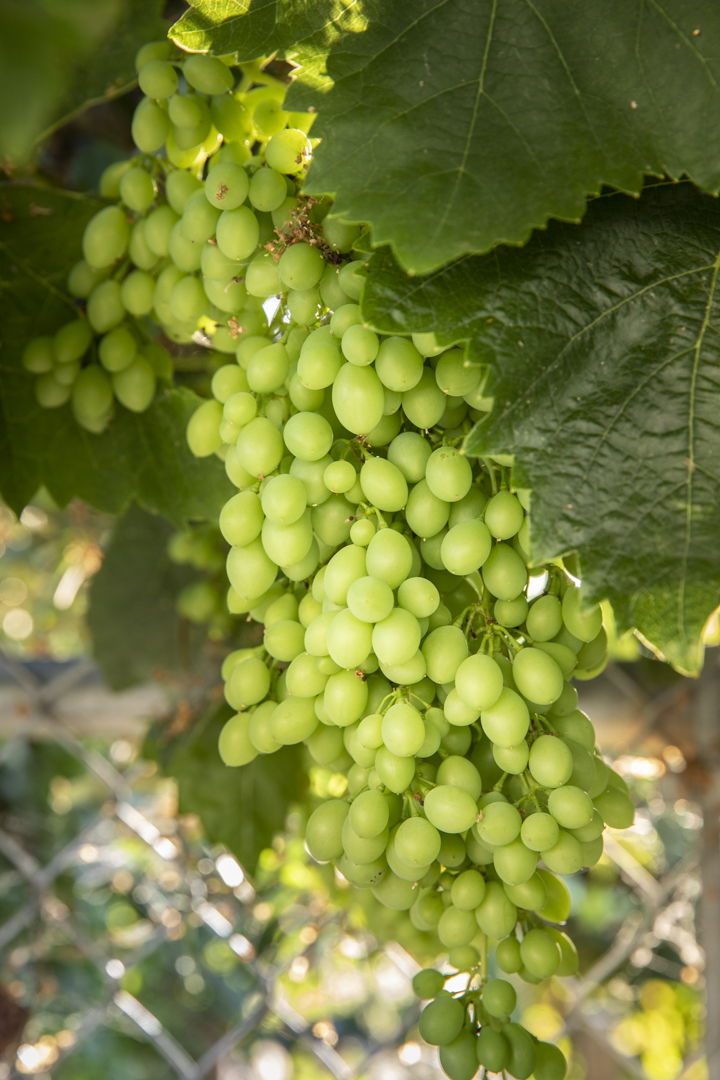
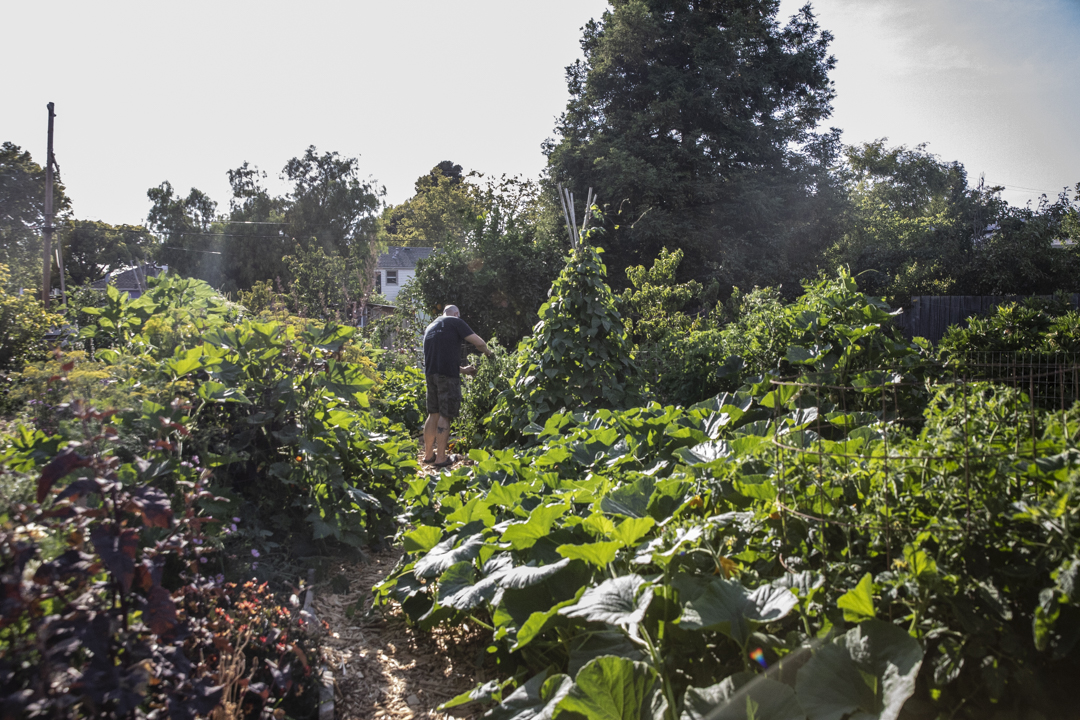 It was a great to see how Dog Island Farm has evolved into a more beautiful, productive and efficient farm than it was when they were first getting started. It’s not easy keeping the urban homestead dream alive and it was good to see it still is happening in the Bay Area. As I left they showed me the front yard filled with natives, another reason for hope.
It was a great to see how Dog Island Farm has evolved into a more beautiful, productive and efficient farm than it was when they were first getting started. It’s not easy keeping the urban homestead dream alive and it was good to see it still is happening in the Bay Area. As I left they showed me the front yard filled with natives, another reason for hope.
Be sure to check out Grow A Pear Nursery here, you gotta love the name!
